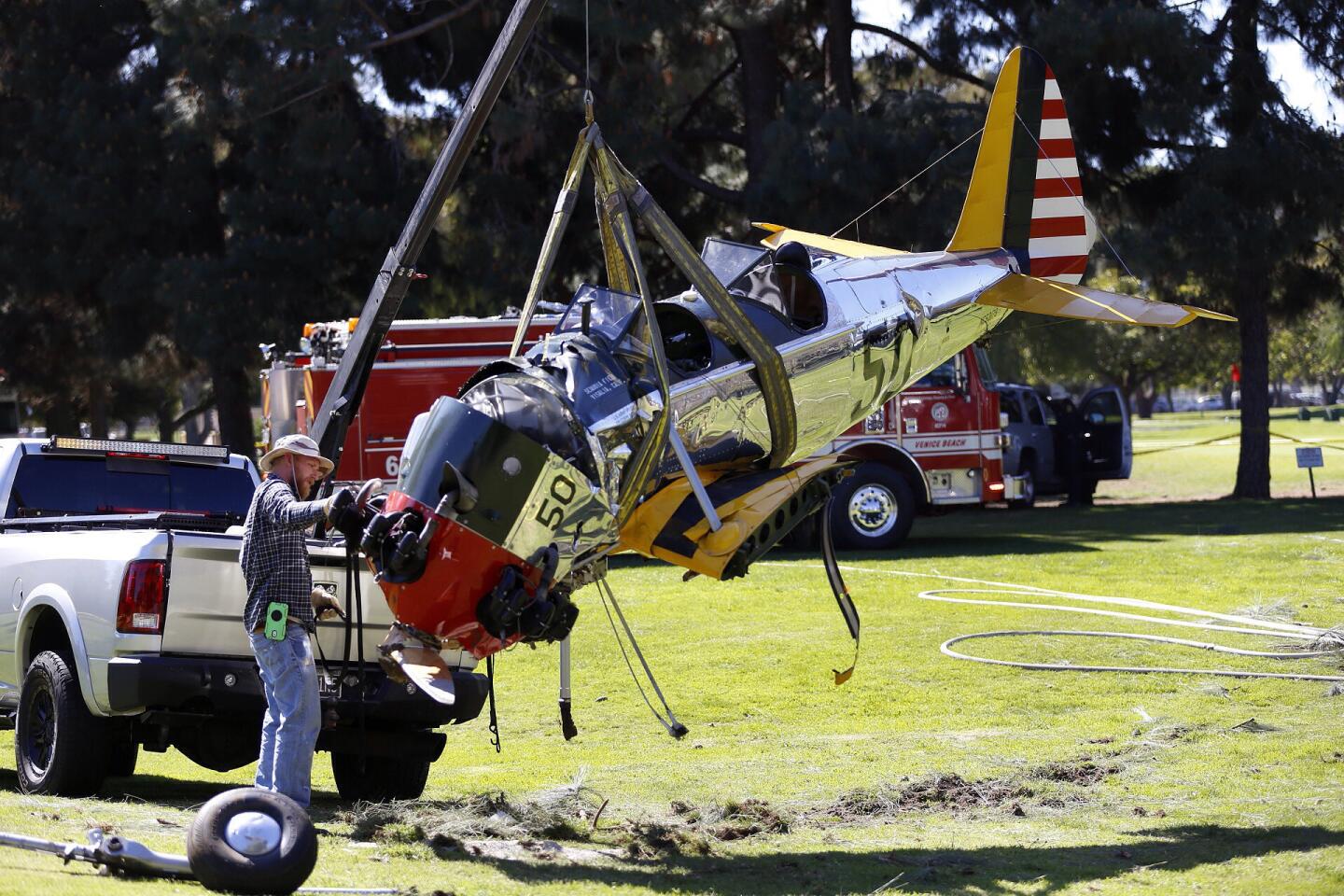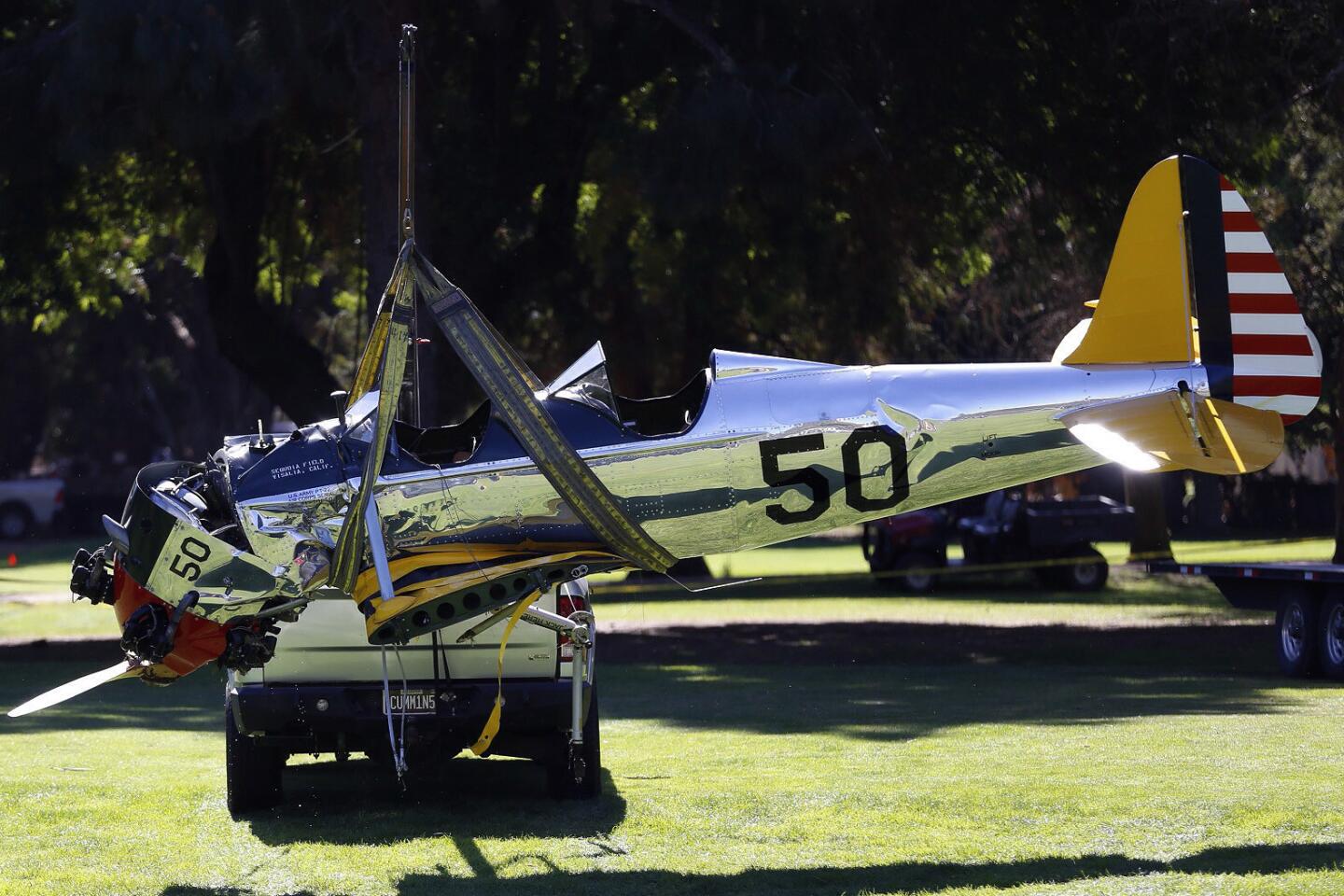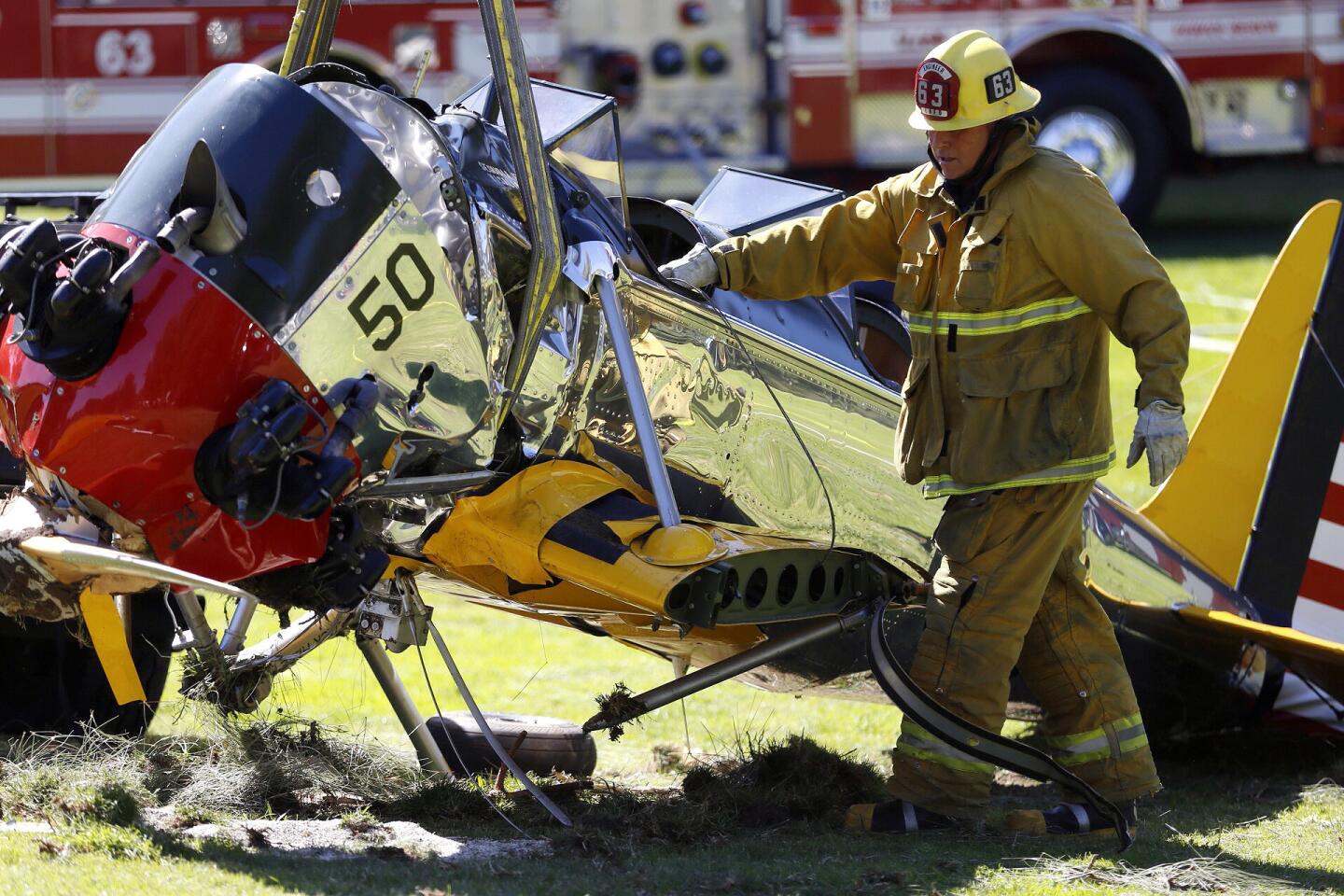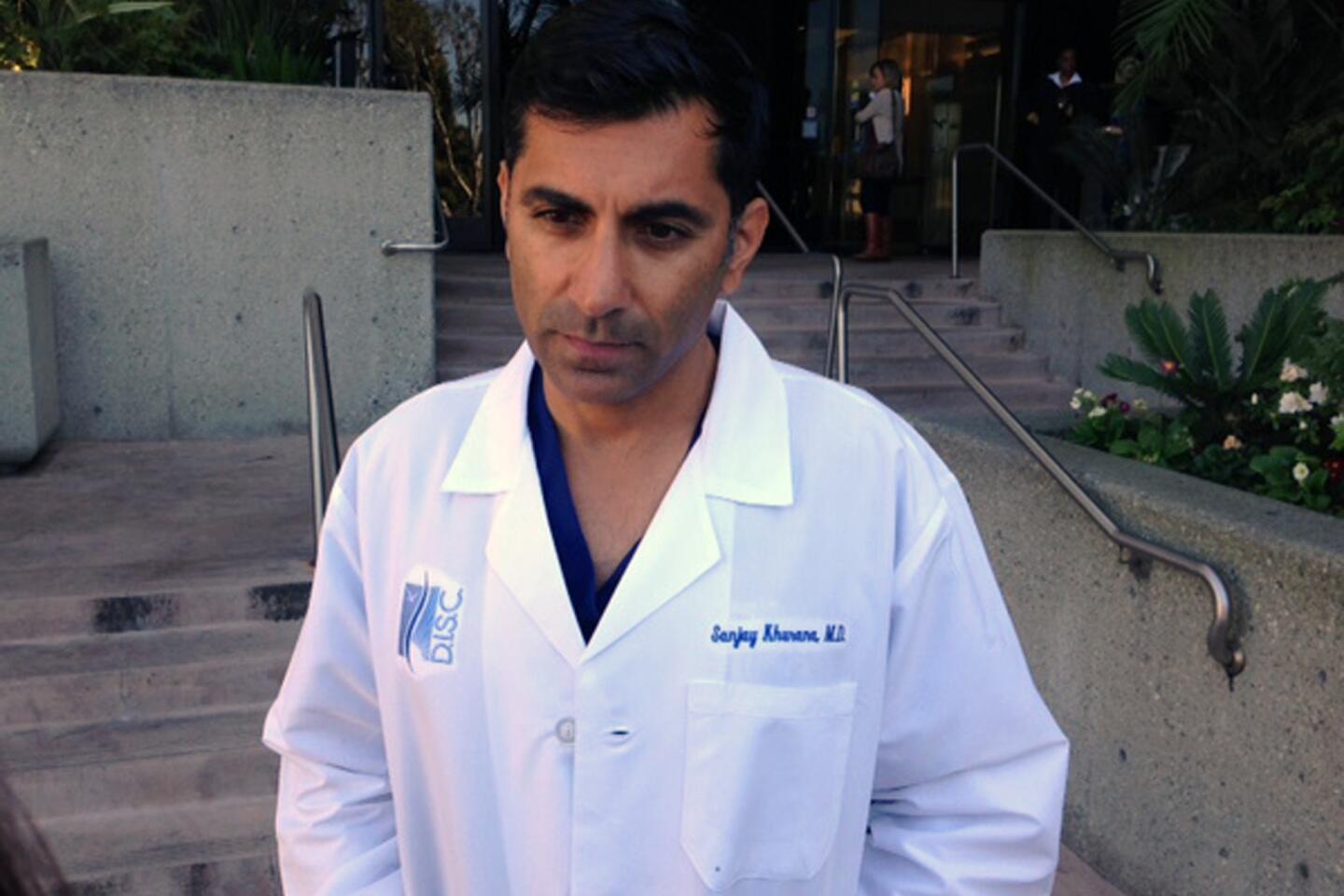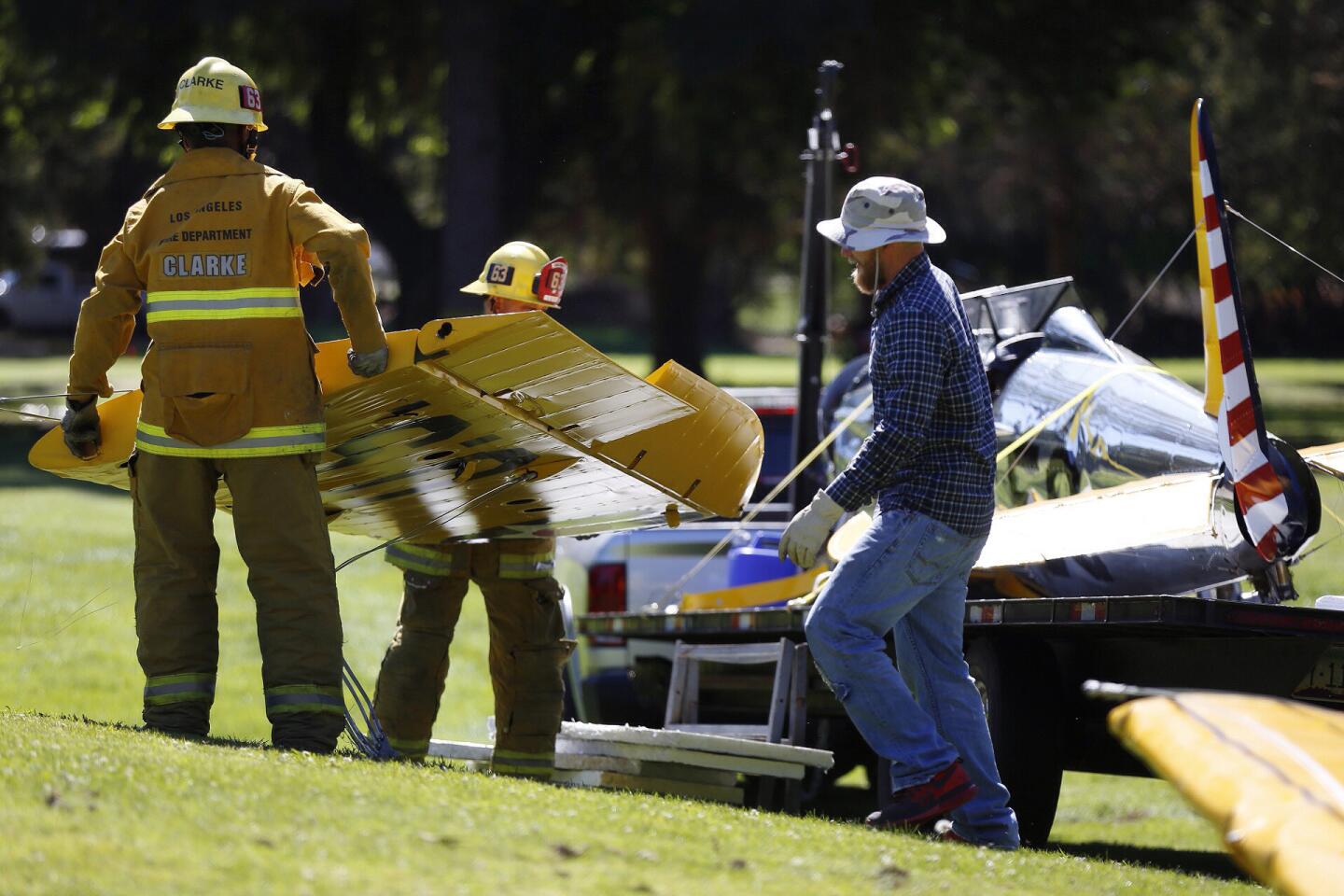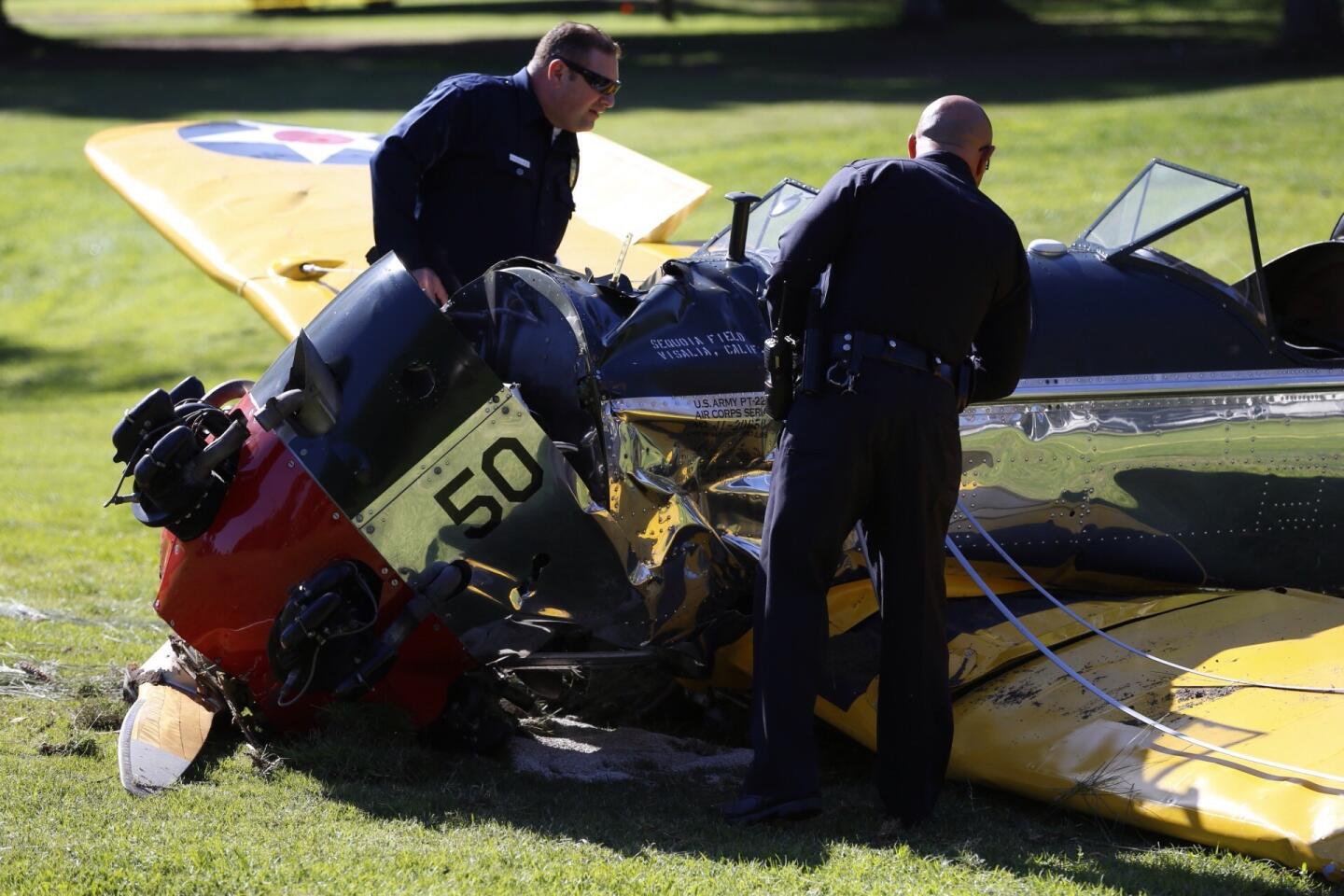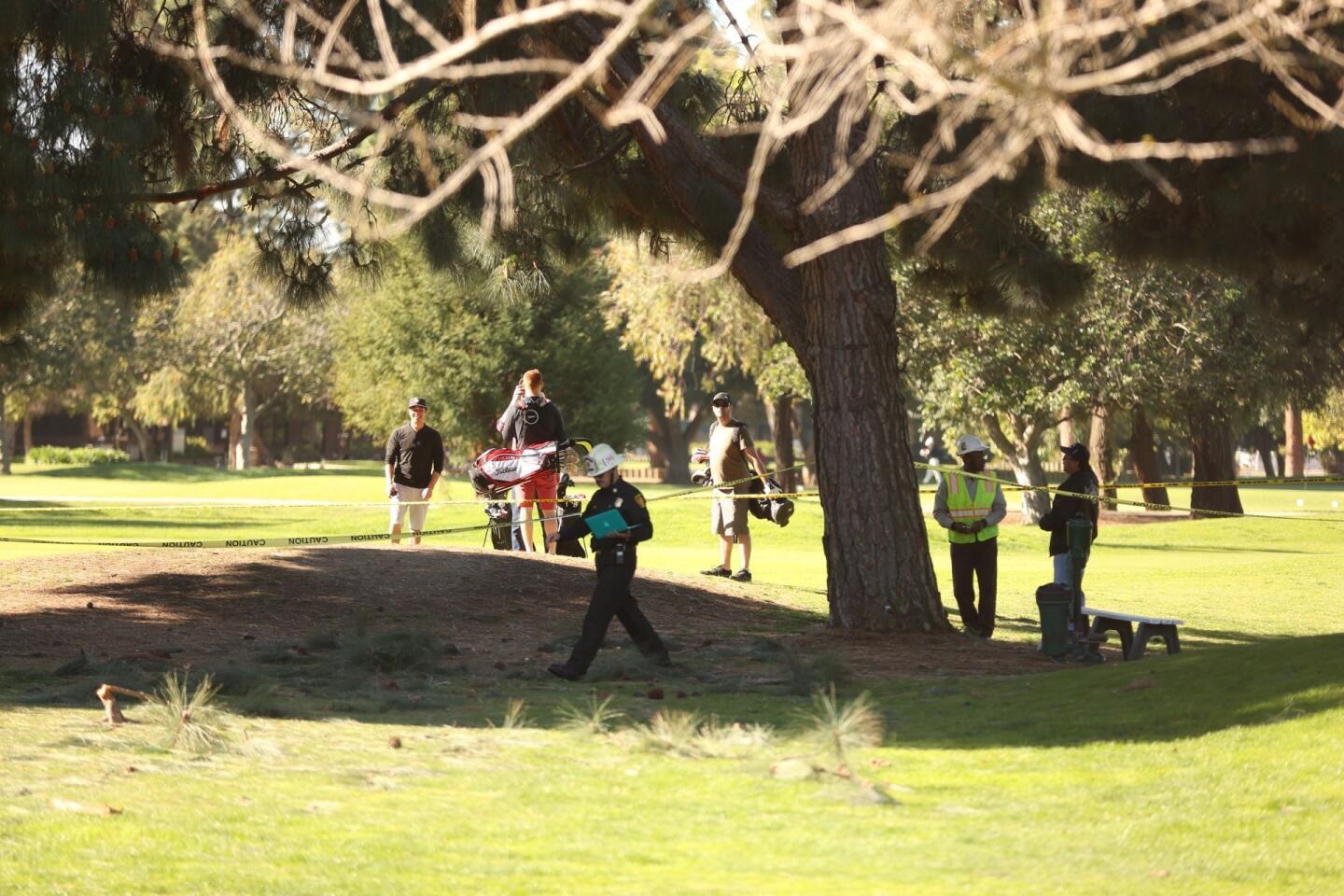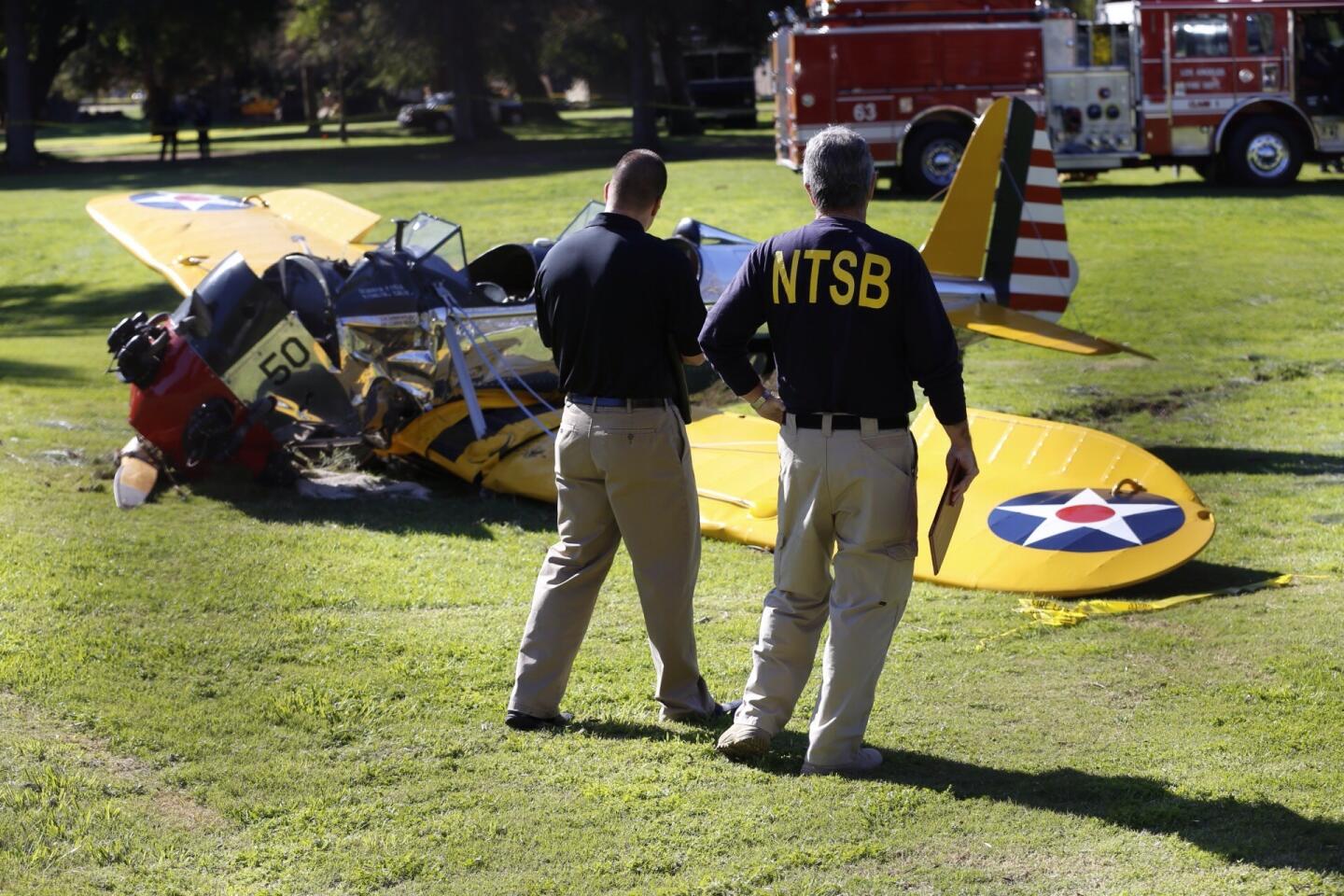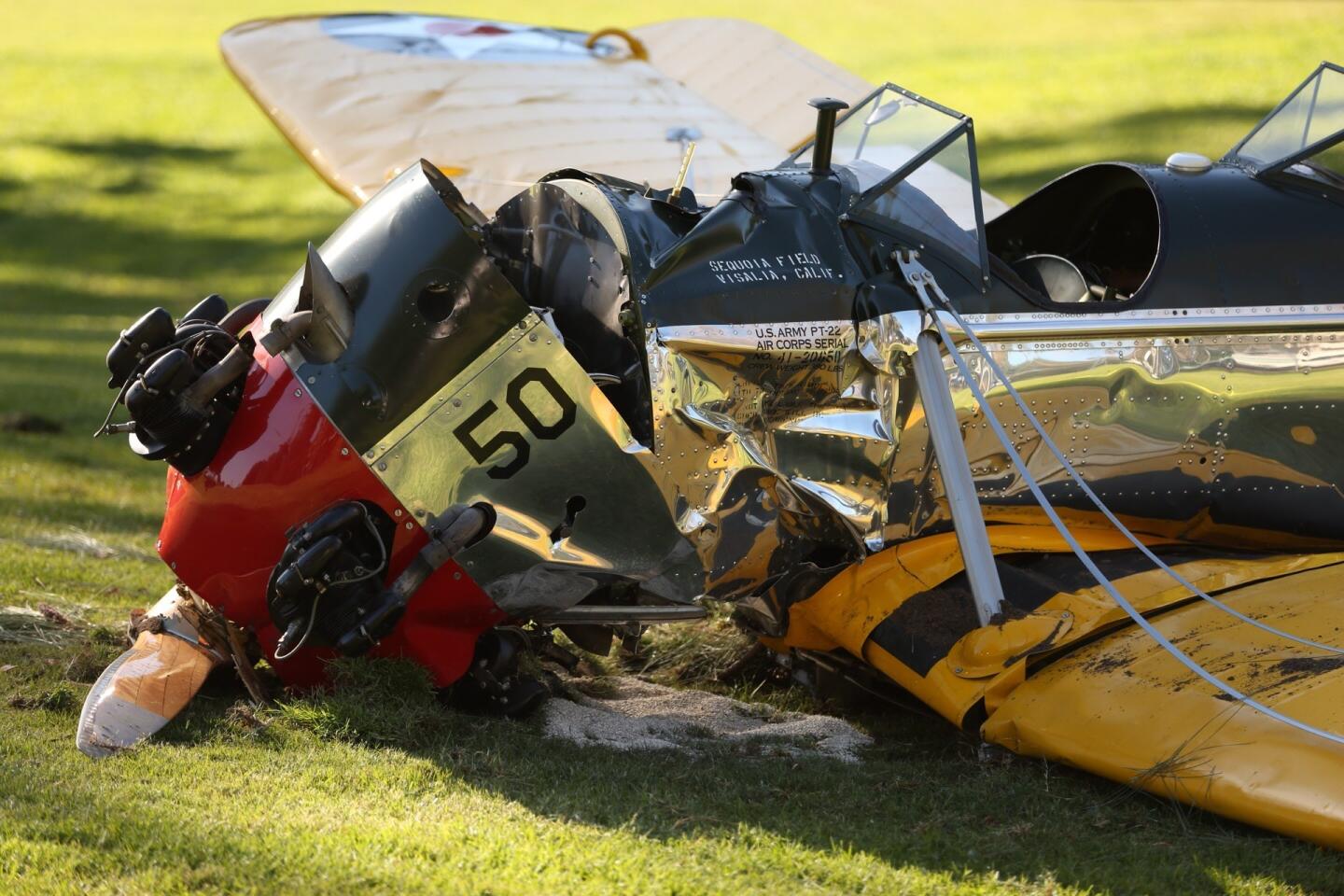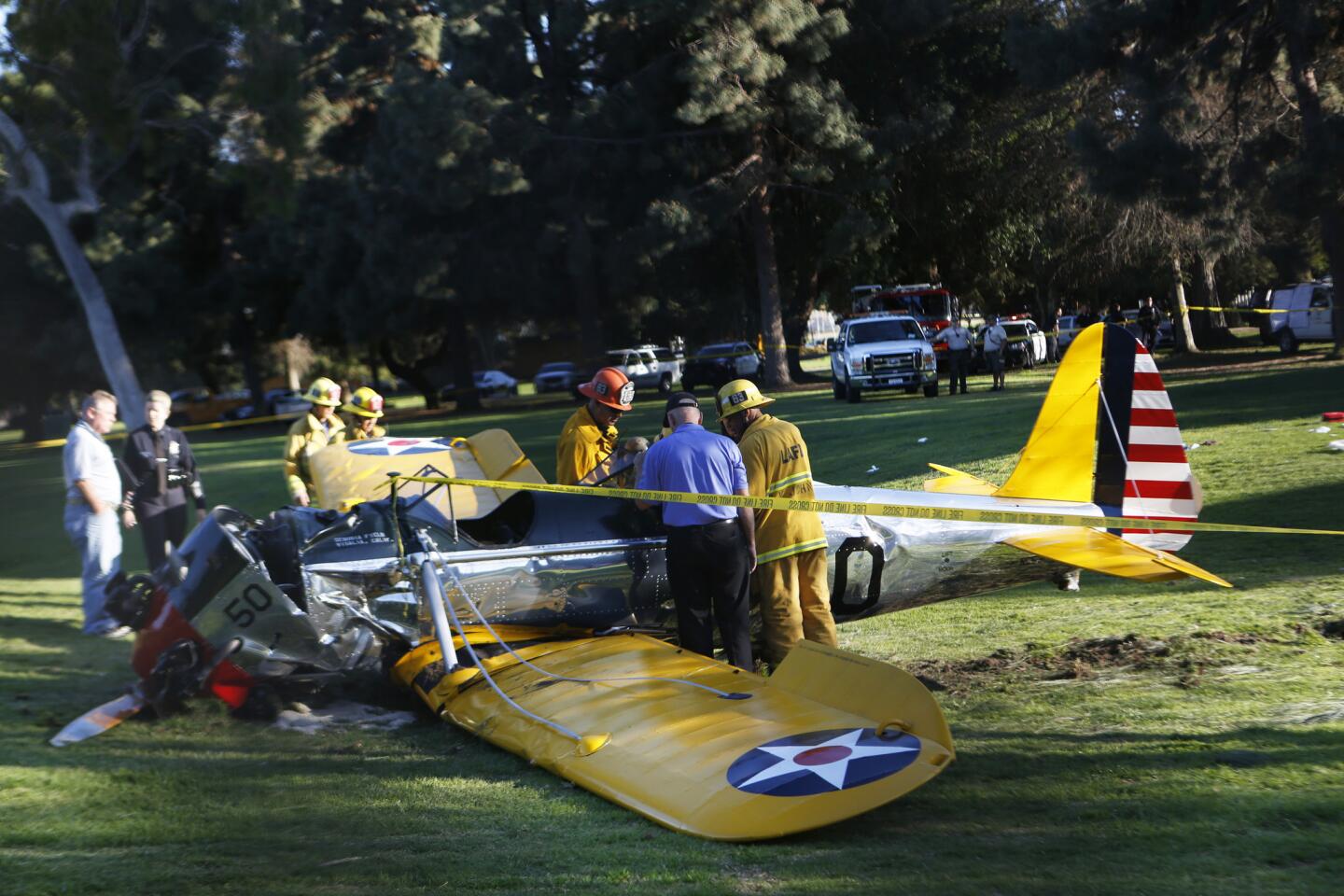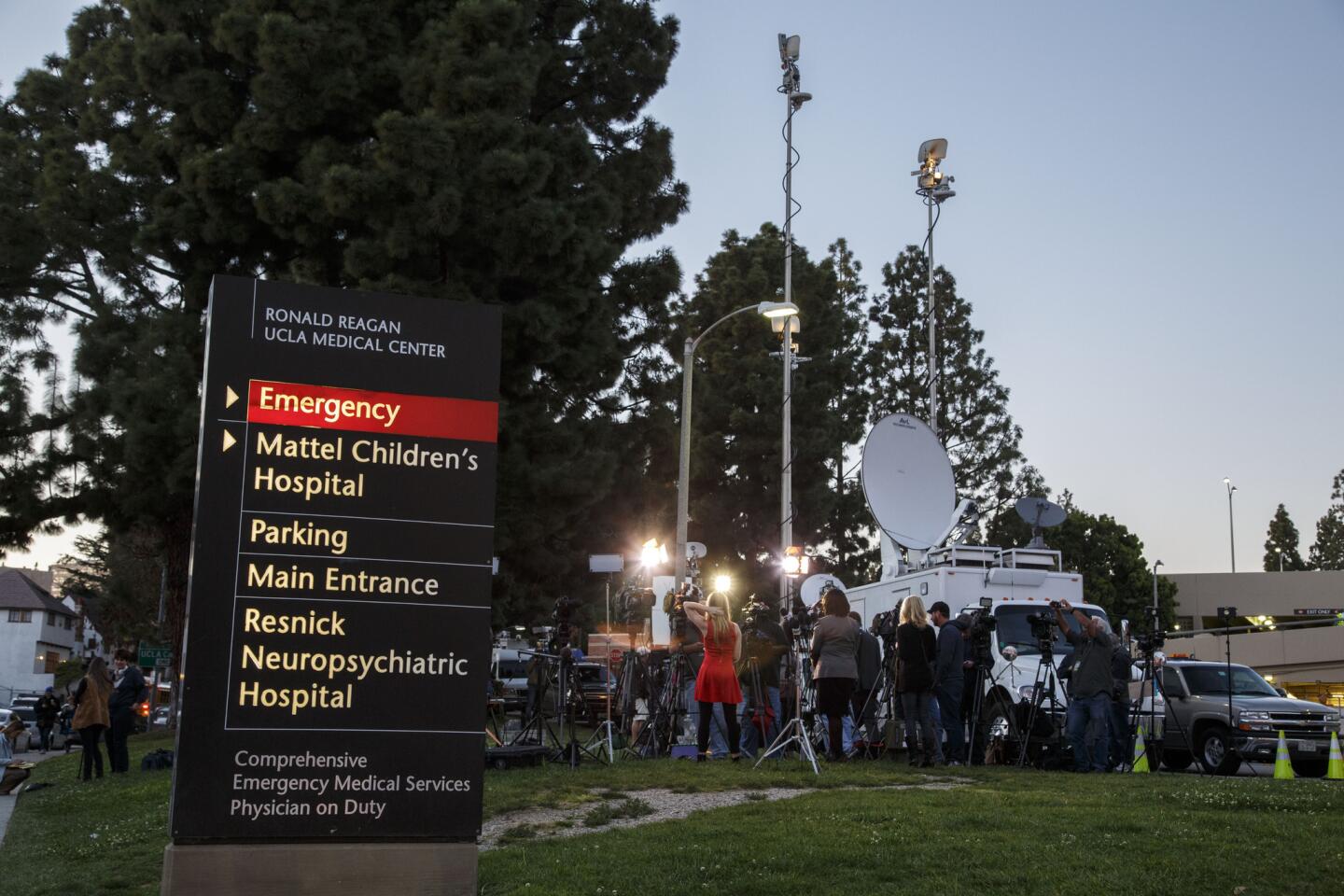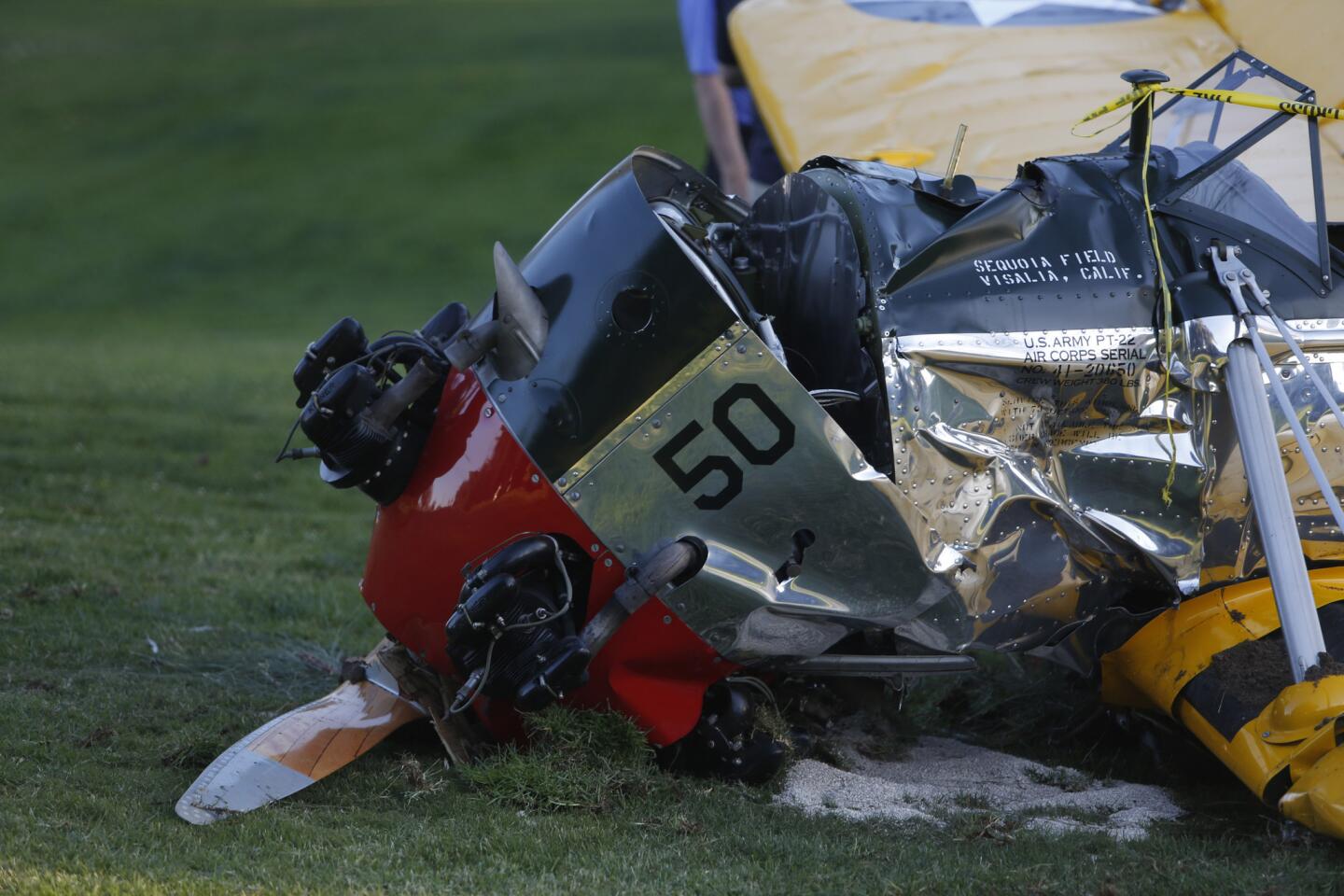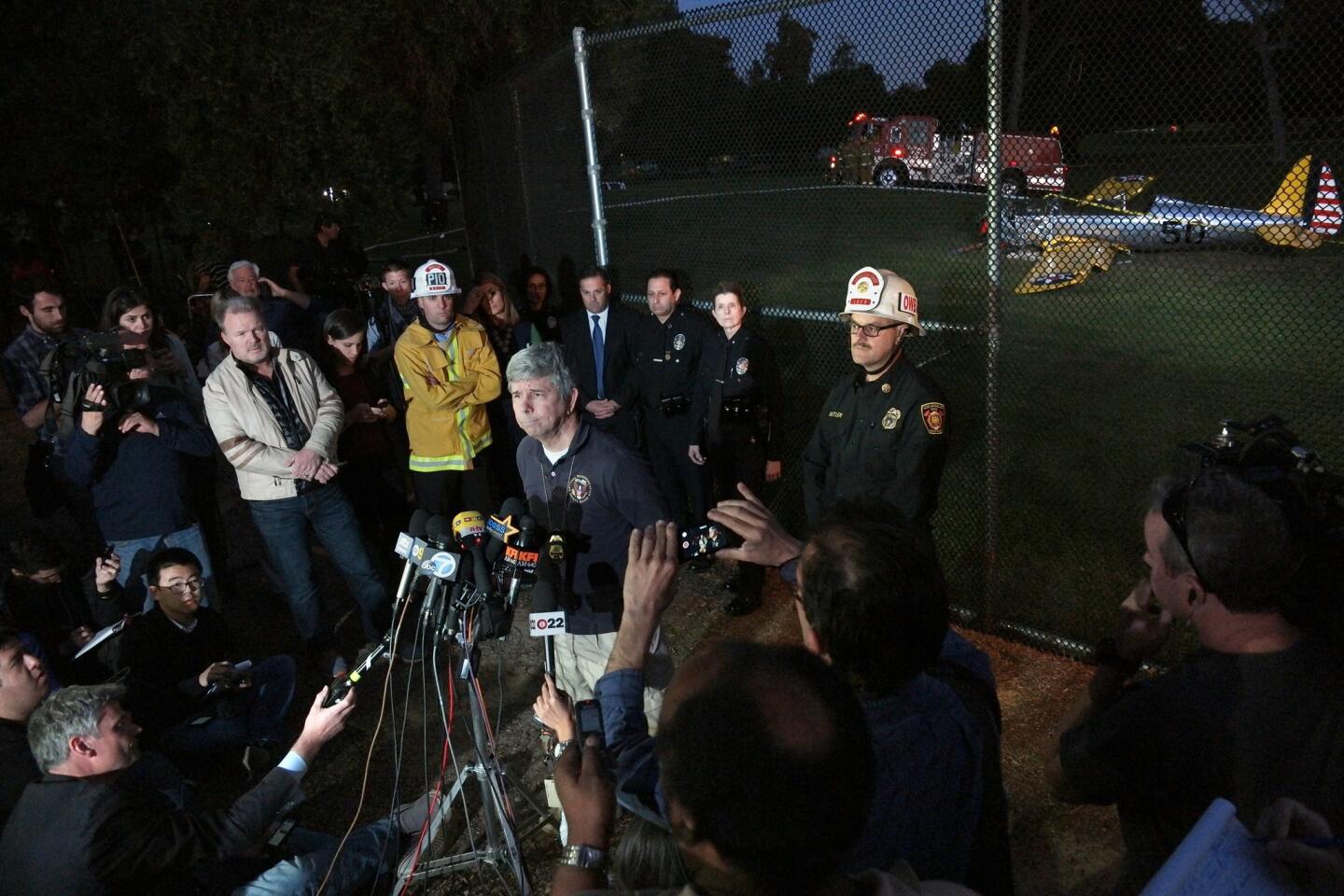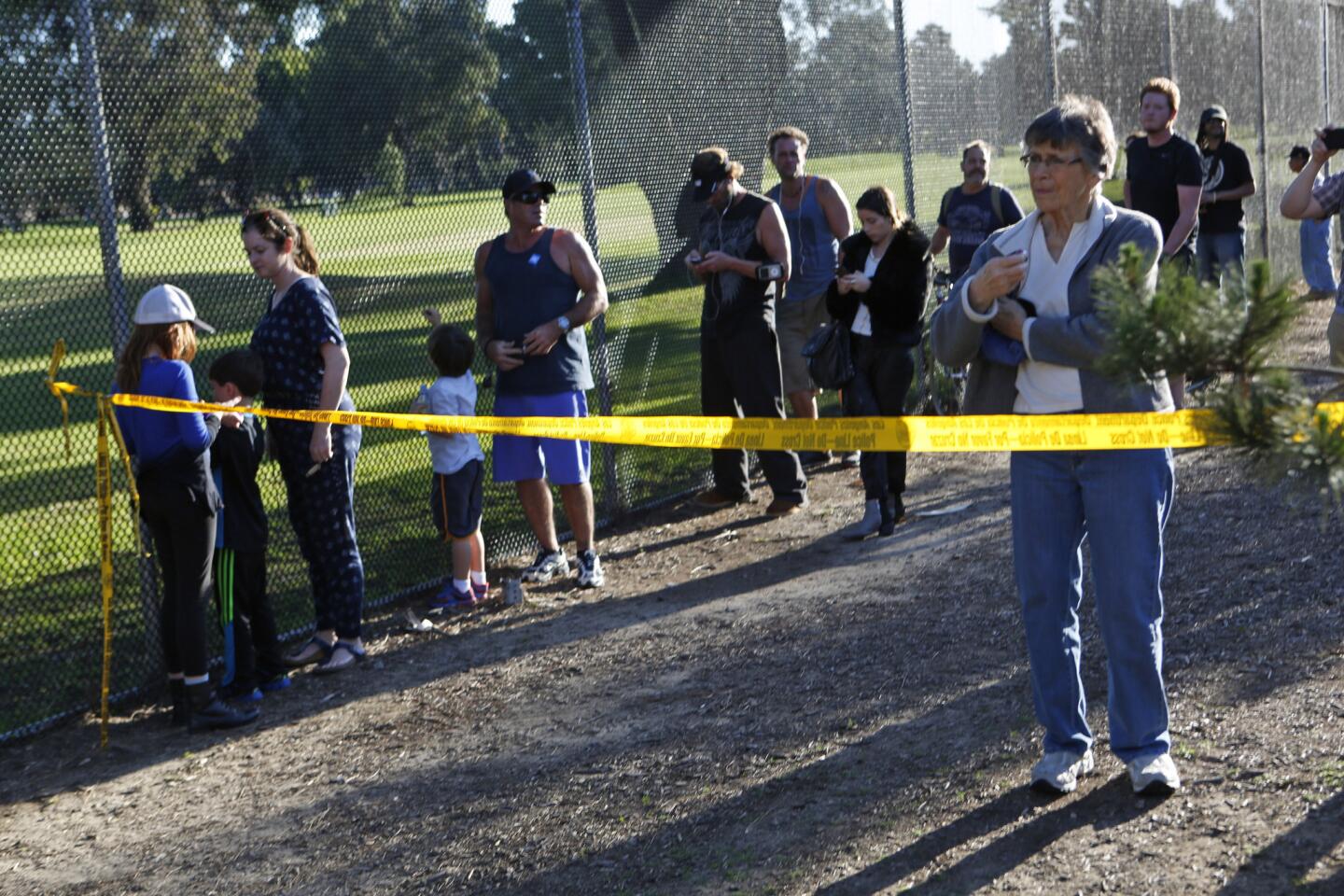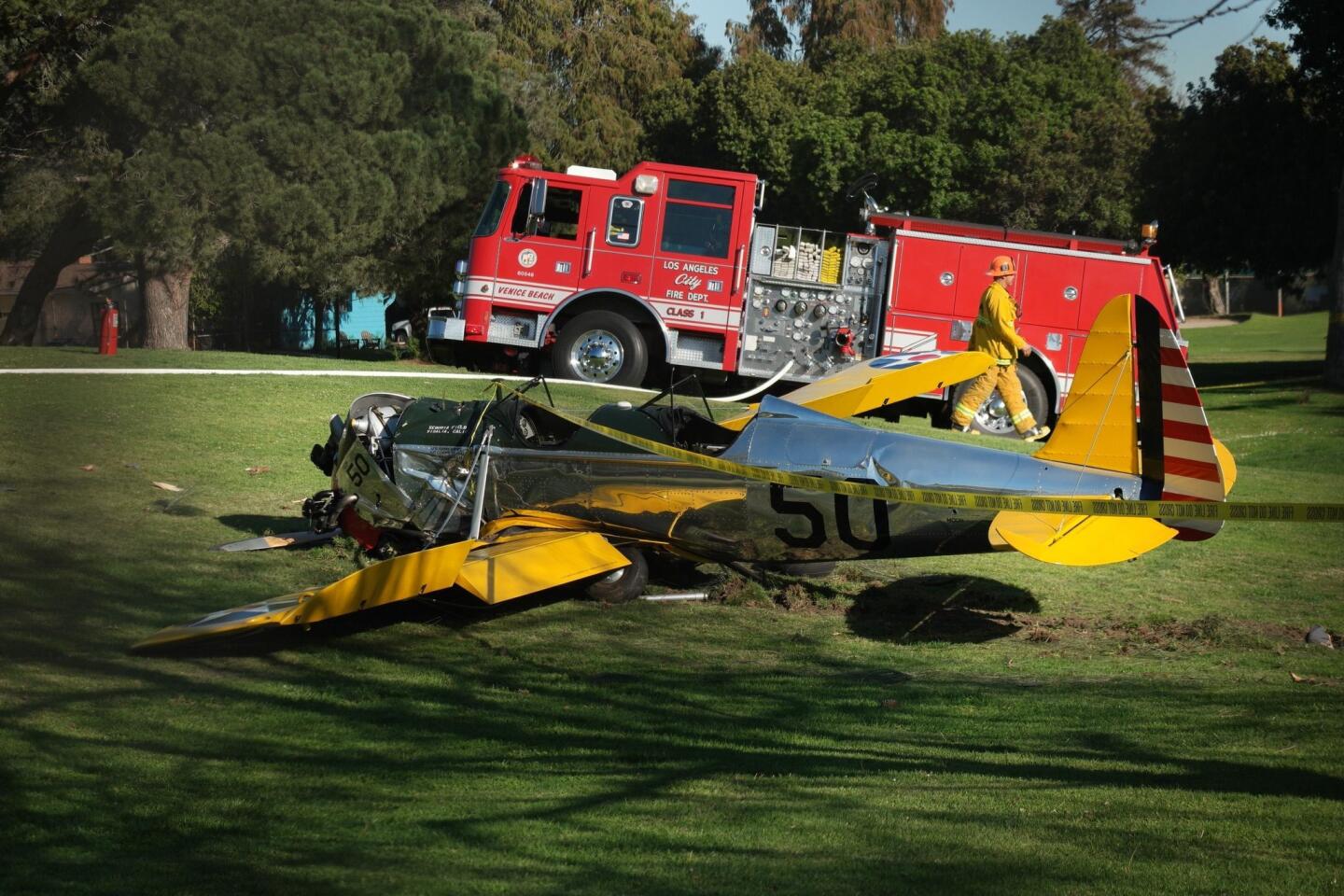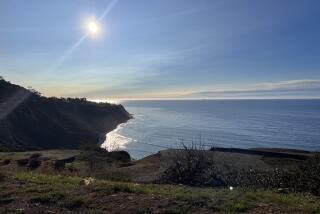Preliminary probe of Harrison Ford plane crash confirms engine failure
Federal investigators confirmed Tuesday that the engine of actor Harrison Ford’s vintage airplane failed moments after takeoff from Santa Monica Airport last week, forcing him to try to crash land the restored World War II-era trainer.
A preliminary report by the National Transportation Safety Board states that the two-seat Ryan PT-22 Recruit “sustained substantial damage following a loss of engine power and subsequent forced landing” on Penmar Golf Course in Venice on Thursday afternoon.
Ford suffered moderate to serious injuries but is expected to recover. His publicist declined to comment.
Best known for his roles in the “Star Wars” and Indiana Jones movies, Ford crash landed about 2:22 p.m. in a clearing on the course, which is about 800 feet southwest of the runway.
According to the NTSB report, Ford advised Santa Monica air traffic controllers of an engine failure soon after takeoff and requested an immediate return to the airport.
Investigators said he then initiated a left turn back toward the runway and struck the top of a tall tree before he came down in an open area of Penmar. The NTSB said that the wings and fuselage of the plane were substantially damaged.
The NTSB, which will determine the probable cause of the accident, cautioned that the information in the preliminary report is subject to change as the investigation proceeds.
Board officials said investigators will thoroughly examine Ford’s aircraft, including its engine, flight controls and records. It could take as long as a year before the final report is completed.
The little yellow and silver monoplane was built in 1942 and is registered to MG Aviation Inc. in Delaware. That type of aircraft served as a primary trainer for the U.S. Army Air Forces during World War II.
Local pilots and flight instructors have praised Ford for staying in control of the powerless plane and guiding it over Penmar, which provides a large swath of open space that can be used for emergency landings.
Anti-airport activists, however, said the crash raised safety concerns, and they renewed their demands that the airport be closed. They also say that many surrounding homes — some within a few hundred feet of the runway — are subjected to noise and air pollution from flight operations.
Opponents have developed a starvation strategy for the airport, which includes shortening the runway to eliminate jets, reducing aviation-related services and leasing airport buildings to non-aviation tenants.
Airport supporters and Federal Aviation Administration officials say Santa Monica Airport is safe and cannot be shut down under various agreements with the U.S. government going back to 1948, when the facility was returned to the city after World War II.
Over the years, federal courts have blocked the city’s attempts to close the airport and to ban private jets with fast landing speeds. In February 2014, U.S. District Judge John Walters rejected the city’s latest lawsuit that said the federal government had given up its interest in the airport. His decision is on appeal.
Follow @LADeadline16 for transportation and aviation news.
More to Read
Sign up for Essential California
The most important California stories and recommendations in your inbox every morning.
You may occasionally receive promotional content from the Los Angeles Times.
